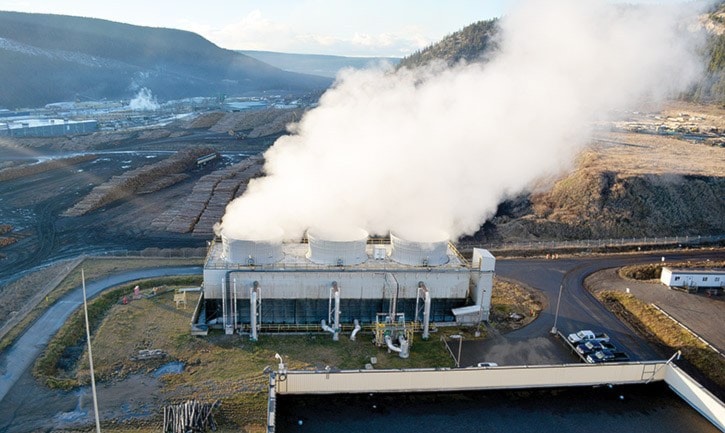Monitoring for pollutants such as sulphur dioxide (SO2) will be necessary for several years if Atlantic Power gets permission to burn more rail ties in its biomass- fired generating plant in Williams Lake.
“Currently there is no SO2 monitoring in the airshed because we don’t monitor SO2 in an airshed unless we have sources,” said Ralph Adams, air quality meteorologist with the Ministry of Environment, noting sources of SO2 normally are oil refineries, pulp mills or smelters.
While sulphur isn’t in the creosote itself, the oil used to carry creosote into the rail ties is based on diesel, which does have some sulphur in it, Adams said.
Presently Atlantic Power has permission to burn five per cent rail ties in its fuel mass, but has chosen not to burn any since 2010.
Five years later the company is requesting to burn more rail ties because it anticipates a decrease in availability of biomass due to the annual allowable cut for the Williams Lake timber supply area being reduced from 5.7 million cubic metres to three million cubic metres.
During a recent tour of Atlantic Power’s plant in Williams Lake, manager Mark Blezard said if the permit amendment is approved, the plan is to burn 800,000 rail ties annually.
“We would be using 75 per cent regular biomass fuel and 25 per cent rail ties,” Blezard said.
For storage of the ties before they are shredded, two scenarios for the same location are being considered by the company.
One option is to dig out an area, insert ballast rock to support the ties, add a layer of biomass fuel and then stack the ties on top.
The second option would see covered storage of the ties in two or three smaller buildings where the ties would be stacked on asphalt.
“Right now we’ve done a model storing 300,000 ties in here at once if we had to, but that might be impractical,” Blezard said.
Once the ties are shredded, they will go by conveyor belt into a covered bin where a two-day supply will be stored and kept separate from the other biomass.
Mixing of the rail ties and the biomass fuel will only happen once the fuel is entering the plant where the nine-storey boiler is housed.
The company is considering a manufactured slow speed shredder built in Oregon because it creates less dust and particulate, and can work with metal, said Terry Shannon, Atlantic Power’s environmental manager of western operations.
Responding to public concerns about emissions from burning rail ties, the company has said repeatedly that during a 100-per cent rail tie burn test in 2001, results showed most pollutants were either destroyed at the boiler’s high temperatures of 1,371C to 1,648C or removed using the plant’s environmental controls.
When asked how the public can be assured the high boiler temperatures will be maintained, Shannon said the system does not operate properly unless those high temperatures are sustained at all times.
So far 50 people or groups have submitted comments about the permit amendment.
Each comment will be addressed and compiled in a report, Shannon said.
